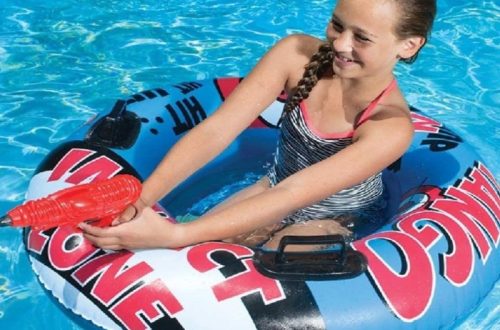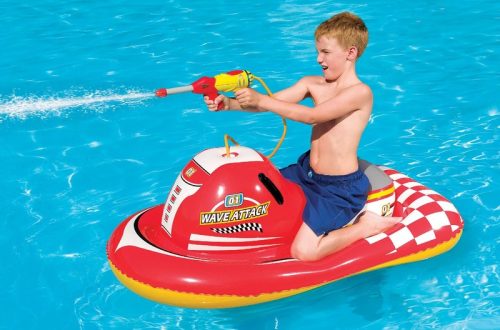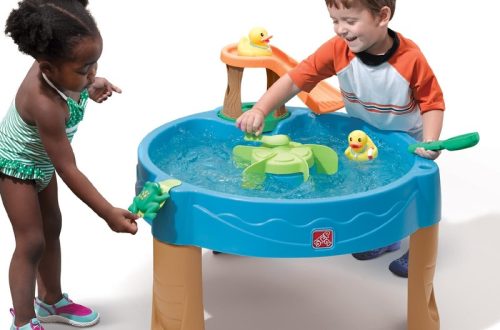The Rising Popularity of Realistic Toy Guns
Over the years, realistic toy guns have gained significant traction among hobbyists and enthusiasts. These replicas are remarkably similar to actual firearms, which is a major draw for collectors and those interested in historical reenactment or tactical games like airsoft and paintball. As the demand for these toys that look like real guns continues to soar, manufacturers are putting more emphasis on producing highly detailed and accurate models.
Several factors contribute to the surge in their popularity. The advent of video games and movies featuring iconic firearms has also piqued interest in owning replicas. The realism offered by these toy guns adds an immersive element to gameplay and collecting. Moreover, the social aspect of community events centered around using these replicas has cultivated a growing culture of like-minded individuals who share a passion for realistic toy firearms.
However, the toy gun that looks real has also sparked debates surrounding their safety and the potential for confusion with actual weapons. This has led to a push for clear distinguishing features and safety protocols, which will be discussed in the following sections. Nevertheless, it’s clear that the allure of realistic toy guns remains strong, with their appeal extending to a broad spectrum of ages and backgrounds.
Legal Considerations for Owning Realistic Toy Guns
Owning a toy gun that looks real comes with legal responsibilities. Various countries and states have specific laws governing the purchase, possession, and use of replica firearms. It’s vital to understand and adhere to these regulations to avoid legal issues. Here are crucial legal considerations to keep in mind:

- Age Restrictions: Many jurisdictions impose age limits on who can buy or possess realistic toy guns. Check local laws to ensure compliance.
- Markings Required: To distinguish them from real firearms, laws may require toy guns to have visible markings. This could be a specific color on the barrel or body.
- Carrying Publicly: Carrying realistic toy guns in public places can lead to misunderstandings. Some areas have strict rules against public display.
- Sales and Distribution: There are regulations on how these replicas can be sold, including packaging and labelling requirements. Retailers must follow these guidelines.
- Transportation: Transporting a toy gun that looks real often requires it to be stored in a particular way, such as in a locked case and separate from ammunition (even if it is fake).
It is also crucial to be aware that laws can change, and staying informed about current regulations will help you enjoy your replica responsibly and legally. Before purchasing or using a realistic toy gun, research local laws or consult with law enforcement to ensure you are not inadvertently breaking any rules.
Distinguishing Features Between Toy Guns and Real Firearms
Identifying the difference between a toy gun that looks real and an actual firearm is crucial for safety. Manufacturers and lawmakers design these differences to prevent any potential confusion. Below are key distinguishing features:
- Coloration: Toy guns often have bright colors or transparent parts. This makes them easy to recognize as toys.
- Orange Tip: Many countries require toy guns to have a blaze orange tip on the barrel. This signals that the gun is not real.
- Weight and Texture: Real firearms are heavier and have a metallic feel. Toy guns are usually lighter and made from plastic.
- Sound: The noise produced by toy guns is different from live gunfire. It is often less loud and distinct.
- Functionality: Toy guns cannot fire real ammunition and have limited mechanical parts compared to real guns.
- Branding and Packaging: When sold, toy guns come with clear labels indicating they are replicas.
It’s vital to recognize these features to maintain a safe environment. Whether partaking in reenactments, collecting, or playing, knowing how to identify a toy gun that looks real is necessary for responsible use.
Essential Safety Guidelines for Handling Toy Guns
When dealing with a toy gun that looks real, safety should always be the primary concern. Here are essential safety guidelines to ensure responsible handling:
- Treat Every Gun as if it’s Real: Even though it’s a toy, handle it with the same respect as a real firearm. This instills good habits and prevents carelessness.
- Keep the Muzzle Pointed in a Safe Direction: Never point a toy gun at anyone. Always keep the muzzle facing a safe, non-threatening direction.
- Clearly State its Nature: If you’re in a situation where others are present, clearly identify your toy gun as a replica. This can avoid confusion and potential alarm.
- Use in Designated Areas: Only use realistic toy guns in areas designated for their use, like airsoft fields or private property with permission.
- Wear Protective Gear: Always wear the appropriate safety gear, especially eye protection, when using toy guns that look real during gameplay.
- Supervise Children: If children are using toy guns, adult supervision is crucial. Use these moments to teach them the importance of safety and responsibility.
Follow these guidelines to enjoy your toy gun that looks real without compromising safety or causing concern to those around you. Always remember that although these are toys, their realistic appearance demands responsible usage.

The Role of Parental Supervision and Education
When it comes to realistic toy guns, the role of parents is critical. It’s up to adults to teach kids how to handle these toys safely and responsibly. Here’s what parental supervision and education should entail:
Instill Safe Habits:
From the start, parents need to teach children that despite being toys, realistic toy guns require careful handling. Stress the importance of never pointing them at anyone.
Ensure Rule Understanding:
Make sure kids understand local laws and rules regarding toy guns. Education on legal aspects helps them grasp the boundaries for using these toys.
Promote Ethical Play:
Discuss with children the ethics and sportsmanship in games involving toy guns. Explain why it’s essential to respect opponents and follow game rules.
Set Clear Boundaries:
Define when and where it’s okay to use realistic toy guns. Having these boundaries helps prevent misunderstandings and accidents in public spaces.
Model Responsible Behavior:
Lead by example. Show your kids how to use toy guns properly. Your actions teach them more than words can say.
Communicate Openly:
Encourage kids to ask questions and express any concerns they might have about their toy guns. Keeping an open dialogue maintains awareness and safety.
Parents play a vital role in shaping how children perceive and use toy guns that look real. With proper supervision and education, kids can enjoy these toys while being mindful of safety and their surroundings.
Impact of Realistic Toy Guns on Public Perception and Law Enforcement
The likeness of a toy gun that looks real to actual firearms can affect public perception. People may find it hard to tell them apart. This confusion can lead to fear and safety concerns. Reports of toy guns being mistaken for real ones are not uncommon. Such incidents can prompt police responses which could escalate quickly. Law enforcement officers must make split-second decisions. This adds stress and danger to their jobs.
Educating the public about the differences is important. Clear markings on toy guns help, but awareness is also key. Law enforcement training now often includes recognizing realistic toy replicas. This training aims to reduce dangerous confrontations.
Community events often showcase safe use of toy guns. They show the importance of responsible play. This helps in shaping a more informed public opinion. Liaison with local law enforcement can foster mutual understanding. It can also assist in establishing safe practices within the community.
In summary, greater community awareness and responsible use of realistic toy guns are vital. They help manage public perceptions and assist law enforcement. They ensure safety and prevent unnecessary incidents. This cooperative approach benefits everyone involved.

Safe Storage Practices for Toy Guns
Proper storage of a toy gun that looks real is essential for safety. It prevents accidents and misunderstandings. Here is what you should do to store your realistic toy guns safely:
- Use Secure Containers: Lock toy guns away when not in use. Use cases with locks or storage with secure locking mechanisms.
- Separate from Real Firearms: If you own real guns, keep toys separate. This avoids any mix-ups. Store toy guns in distinctly different locations or containers.
- Inform the Household: Let everyone in your home know where toy guns are stored and the safety rules involving them. Communication can prevent accidents.
- Control Access: Only those who understand the safety concerns and legal issues should have access to realistic toy guns. Keep keys or combinations private.
- Remove Batteries or Gas: If the toy gun operates on batteries or gas, remove them for storage. This step adds another layer of safety.
- Check Community Regulations: Some communities have storage guidelines for toy guns. Follow these to ensure you’re within safety norms.
By sticking to these storage practices, you can help ensure that toy guns are respected for the replicas they are, and that safety is a priority in your home. Remember, responsible ownership starts with how you store your toy gun that looks real.
Community Awareness and Responsible Use
The popularity of realistic toy guns calls for community awareness and their responsible use. It is key that both adults and children understand the implications of using such toys. Here is how community awareness and responsible use can be fostered:
- Educate on Differences: Teach community members to recognize the distinguishing features of toy guns versus real firearms. Educational campaigns can clarify these differences.
- Promote Safety First: Communities should stress the importance of safe handling and storage of toy guns. Safety workshops and flyers can spread this message.
- Host Safe Spaces: Create designated areas for the use of realistic toy guns, like airsoft fields or paintball parks. These controlled environments ensure responsible usage.
- Develop Good Habits: Encourage users to adopt safe practices from the beginning. This includes treating every toy gun as if it’s real, pointing the muzzle safely, and wearing protective gear.
- Include Law Enforcement: Involve local police in educational programs. Officers can offer insights and help promote understanding between law enforcement and enthusiasts.
- Foster Open Dialogue: A community that talks openly about the use and impact of realistic toy guns is a safer one. Town hall meetings and forums are excellent venues for discussion.
Through these steps, communities can ensure that the enthusiasm for realistic toy guns does not compromise public safety. Community awareness leads to responsible use, which, in turn, encourages a shared respect for the realistic aspect of these toys.




